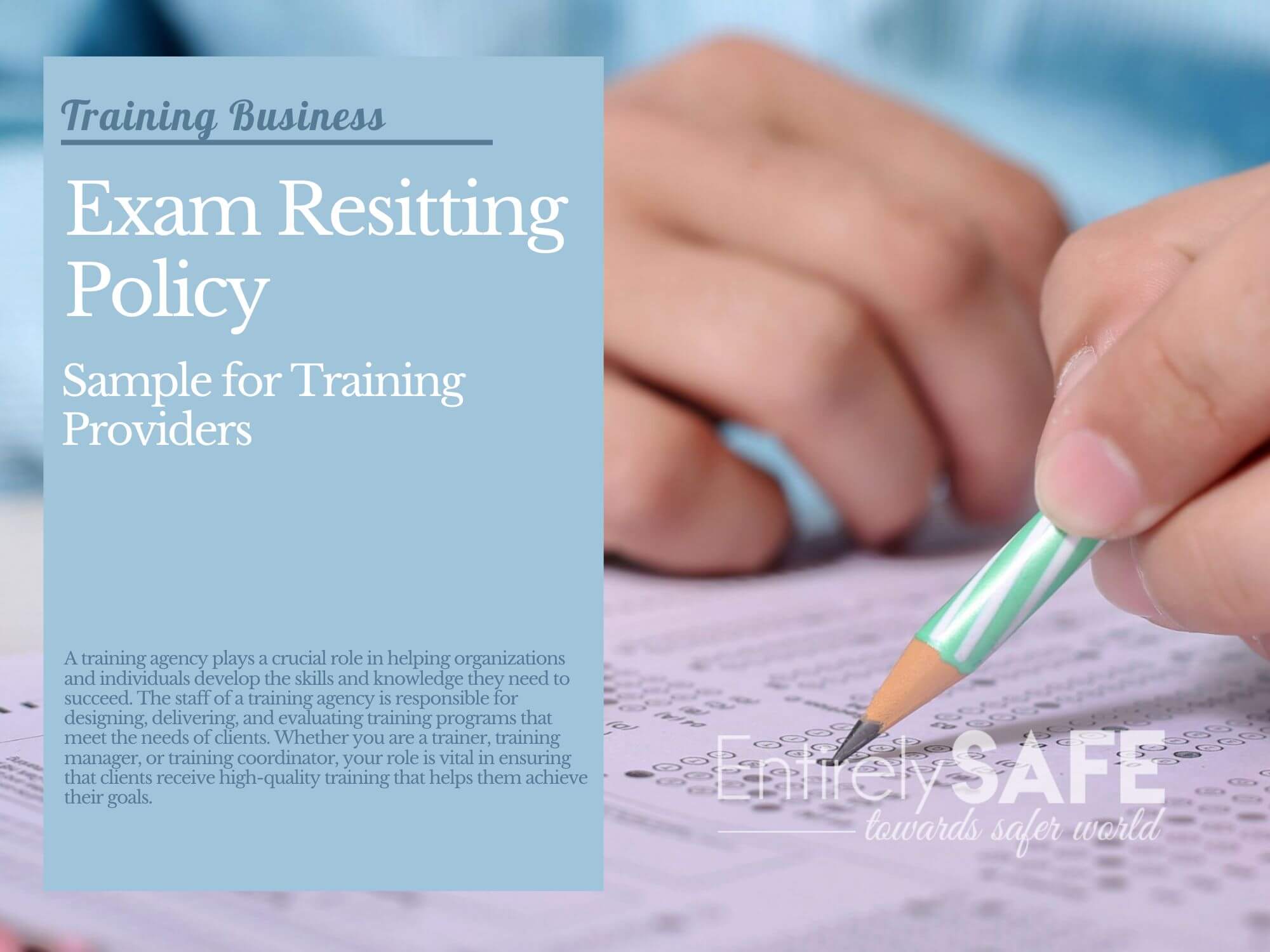Sample Training Provider Exam Resitting Policy

Resitting is a process that allows a student who has not passed an assessment to retake it and have another opportunity to demonstrate their knowledge and skills. In many cases, it is a requirement for students to pass certain assessments in order to receive certification or progress to the next level of training. Resitting provides students with a chance to demonstrate their competency in a subject, and helps to ensure that they have the necessary knowledge and skills to succeed in their chosen field.
However, it is important to note that resitting is not a guarantee of success, and students are expected to adequately prepare for their assessments in order to achieve a passing grade. By resitting, students are given another opportunity to demonstrate their understanding of the material and their ability to apply what they have learned in real-world situations.
Eligibility criteria for Resitting
The eligibility criteria may include a minimum score requirement, a time limit, and other pre-requisites. These criteria are designed to ensure that students have a fair opportunity to demonstrate their understanding of the material and their ability to apply what they have learned in real-world situations.
- Minimum score requirement means that students must have received a certain score on the original assessment in order to be eligible for resitting. This requirement helps to ensure that students have a basic understanding of the material and are not completely unfamiliar with the content.
- Time limit for resitting helps to ensure that students are held accountable for their performance and are not able to repeatedly resit assessments without making progress.
Meeting other pre-requisites such as attending additional training or completing coursework is a common requirement for resitting. This helps to ensure that students have had additional exposure to the material and have taken the necessary steps to address any gaps in their knowledge.
Resitting Process
The process for resitting an assessment is an important aspect of the resitting policy. The following steps outline the process for resitting:
- Request for resitting: a student who wishes to resit an assessment must make a formal request to the training agency. This request should be made within a specified timeframe, stated in this resitting policy.
- Approval of request: once the request is received, the training agency will review it to determine if the student meets the eligibility criteria for resitting. If the criteria are met, the request will be approved, and the student will be notified. If the criteria are not met, the request will be denied, and the student will be informed of the reason for denial.
- Payment of fees: if the request is approved, the student must pay the required fees for resitting the assessment.
- Scheduling of assessment: after the fees have been paid, the training agency schedules the resit assessment and provide the necessary information to the student. This may include the date, time, location, and any other relevant details. The student should arrive at the designated location on the specified date and time, ready to complete the resit assessment.
Resitting fees
Resitting fees depend on the specific assessment, but they may be a flat fee or a percentage of the original cost. The fees may vary depending on the course and assessment.
Resitting Restrictions
- Retake limit: a student can resit an assessment max 2 times. This limit helps to ensure that students are held accountable for their performance and are encouraged to adequately prepare for their assessments.
- Resitting Course: The Student may not resit a course for which he/she has failed an assessment. He can only resit the assessment.

